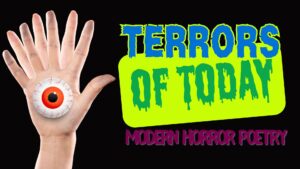Terrors of Today: Modern Horror Poetry
It’s been 180 years since Edgar Allan Poe wrote “The Raven,” the poem that turned him into an overnight success, only four years before his life was tragically cut short at just forty years of age. The official cause of death was “congestion of the brain,” sometimes used as a euphemism for alcoholism-related mortality of the era. In honor of this morbid Bostonian, we honor Dark Poetry Day on the anniversary of his death (October 7) rather than his birthday.
He is one in a long list of dark poets, from Phyllis Wheatley, William Blake, Dante Aligheiri, and the Pearl Poet who preceded him, through his contemporaries like Emily Dickinson and Nathaniel Hawthorne, and all the way to those of us who follow in his footsteps, such as Sylvia Plath. Many poets over the course of that long lineage have explored themes of death, loss, and mental illness, but each also wrote about themes that were quite contemporary to the specific times and contexts in which they lived. Poe and Tennyson wrote allegories on industrialization and class war; Wheatley and Jupiter Hammon about slavery. Plath and Dickinson wrote on womanhood in their respective eras.
From ecology to the economy to the modern author’s struggle against the rising tide of AI:
What sources of inspiration do modern horror poets share with the poets of lore, and which themes are unique to our times? Join us for relevant works from modern horror poets shared with commentary about their process and how their works relate to the modern world in the HWA Horror Blog’s news series “Terrors of Today: Modern Horror Poetry.”


